
Ichthyophis beddomei is a species of caecilian in the family Ichthyophiidae. This species is distributed widely in the Western Ghats in southern India. The nominal species might be a composite of several cryptic species. It is also known as the yellow-striped caecilian, Beddome's caecilian, or Nilgherries caecilian.
Gegeneophis carnosus is a species of caecilian found in Karnataka and Kerala states, India. Its common name Periah Peak caecilian refers to its type locality, though it is also known under names blind caecilian and pink blind caecilian.
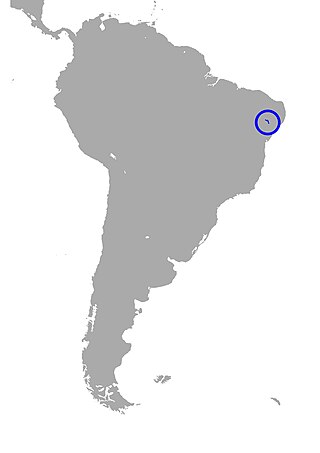
Chthonerpeton arii is a species of caecilian in the family Typhlonectidae. It is endemic to Brazil. Its natural habitats are dry savanna, rivers, intermittent rivers, freshwater marshes, intermittent freshwater marshes, pastureland, irrigated land, seasonally flooded agricultural land, and canals and ditches.

Chthonerpeton is a genus of semiaquatic amphibians in the family Typhlonectidae. They occur in South America east of the Andes.
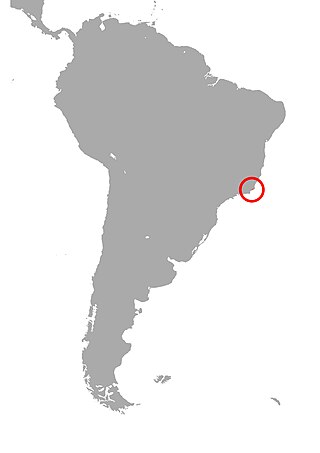
Chthonerpeton braestrupi is a species of caecilian in the family Typhlonectidae. It is endemic to Brazil. Its natural habitats are rivers, swamps, freshwater marshes, intermittent freshwater marshes, pastureland, irrigated land, seasonally flooded agricultural land, canals and ditches.

Chthonerpeton exile is a species of caecilian in the family Typhlonectidae. It is endemic to Brazil, and only known from its imprecise type locality "Bahia". Only one specimen is known and now lost. The specific name exile, form Latin exilis, refers to the "relatively slender, delicate shape of the body and head." The common name Bahia caecilian has been coined for this species.

Chthonerpeton indistinctum is a species of caecilian in the family Typhlonectidae. It is found in northeastern Argentina, Paraguay, Uruguay, and southeastern Brazil. The common name Argentine caecilian has been coined for it.
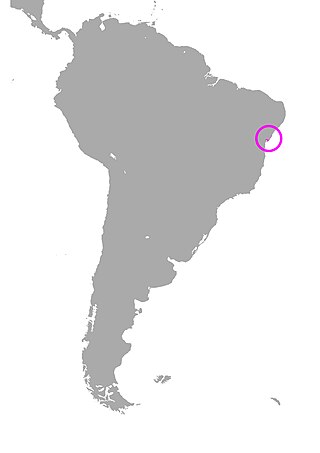
Chthonerpeton noctinectes is a species of caecilian in the family Typhlonectidae, endemic to Brazil. Its natural habitats are subtropical or tropical seasonally wet or flooded lowland grassland, swamps, freshwater lakes, and pastureland.
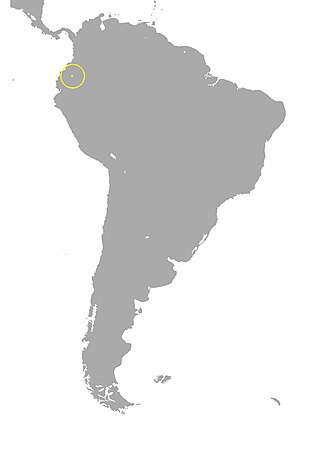
Chthonerpeton onorei is a species of amphibian in the family Typhlonectidae, endemic to Ecuador. Its natural habitats are subtropical or tropical moist montane forests, rivers, swamps, freshwater marshes, intermittent freshwater marshes, pastureland, irrigated land, seasonally flooded agricultural land, and canals and ditches.
Chthonerpeton perissodus is a species of caecilian in the family Typhlonectidae. It is endemic to Minas Gerais, Brazil, and only known from its imprecise type locality, Rio Pandeiro. Only three specimens are known. The common name Minas Gerais caecilian has been coined for this species.
Geotrypetes pseudoangeli is a species of caecilian in the family Dermophiidae. It is only known from Sanokwelle near Ganta in northern Liberia and from Beyla in southeastern Guinea. Common name false Angel's caecilian has been suggested for this species.
Oscaecilia hypereumeces is a species of caecilian in the family Caeciliidae. It appears to be endemic to Brazil and is only known from two specimens. The holotype was collected from Joinville in Santa Catarina, although there are some doubts whether this really is its correct origin. Another specimen originates from an unknown locality. Common name Joinville caecilian has been proposed for this species.

Siphonops paulensis, or Boettger's caecilian, is a species of caecilian in the family Siphonopidae. It is found in northern Argentina, Paraguay, eastern Bolivia, and southern Brazil. It lives subterraneously in forests, savannas, shrublands, and grassland. It also adapts to anthropogenic disturbance and can even live in urban gardens. In fact these caecilians have even been recorded to breed and raise their young close to Santa Cruz, a highly populated city. It is a locally common species that is not facing major threats.
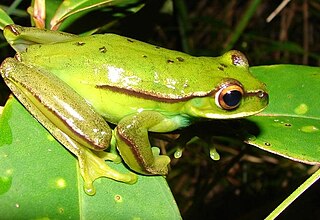
The Mundo Novo tree frog is a species of frog in the family Hylidae. It is endemic to south-eastern Brazil where it is known from the easternmost Rio Grande do Sul and adjacent southeastern Santa Catarina. Its natural habitats are forested mountain slopes near streams with clear running water. The eggs are deposited on vegetation hanging into the water. It is a common species although habitat loss and water pollution are threats.

The Koh Tao Island caecilian is a species of amphibian in the family Ichthyophiidae found in Cambodia, Laos, Myanmar, Thailand, and Vietnam. Also known as the Ichthyophis bannanicus, the Banna caecilian, it is also found in southern China.

Ichthyophis supachaii, or Supachai's caecilian, is a species of caecilian in the family Ichthyophiidae found in Thailand's provinces of Nakhon Si Thammarat and Trang, and possibly Malaysia.
Rhinatrema is a genus of caecilians in the family Rhinatrematidae. Their common name is two-lined caecilians. The genus is known from the Guyanas and adjacent Brazil. Most Rhinatrema are known to inhabit and live in areas of tropical forests where there is an abundance of dense, dead vegetation matter.
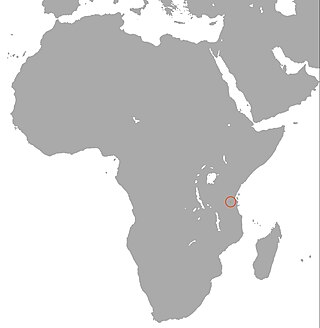
Scolecomorphus uluguruensis, is a species of caecilian in the family Scolecomorphidae. It is endemic to the Uluguru Mountains, Tanzania.

Boto is a Portuguese name given to several types of dolphins and river dolphins native to the Amazon and the Orinoco River tributaries. A few botos exist exclusively in fresh water, and these are often considered primitive dolphins.














